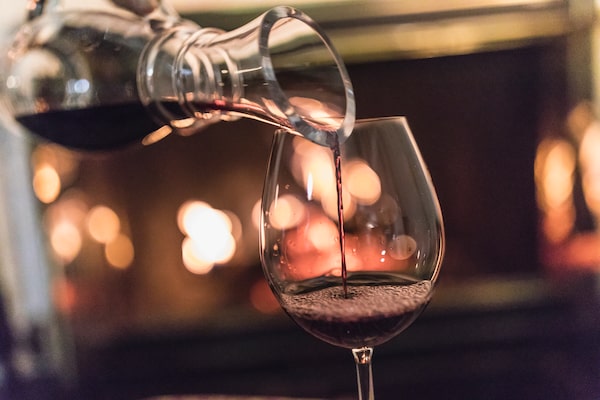
Red wine photography PUR-FW-WATERS-0214 Unrecognizable woman, a decanter in her hands, pouring red wine in a glass.Instants/E+
A cluster of the world’s best wine producers gathered at the 42nd annual New York Wine Experience last week to present 260 must-try red, white, rosé and even orange wines at the ballrooms of Times Square’s Marriott Marquis. Each winery poured a current release or older vintage rated 90 points or higher by Wine Spectator magazine, such as Château Haut-Brion 2007, Ridge Montebello 2003 and Marqués de Cáceres Rioja Gran Reserva 1991. Those wines and many, many others would have been suitable candidates for decanting before serving, but only a few wineries could be seen pouring out of a container other than the bottle.
Decanting is a personal preference. Some wine lovers would rather pour from the bottle and swirl the wine in their glass to slowly introduce air into their cabernet or syrah. Others will pour their favourite wines through an aerator that fits like a speed pourer on the bottle to rapidly release its fruity character. I suspect the winemakers at the New York Wine Experience wanted to keep their set-up to a minimum and be able to display their label to consumers as they served them.
Decanting a wine was traditionally done to separate wine from the solids suspended in the bottle. As red wine ages, tiny particles in the wine, including phenolic compounds like tannins and other polyphenols, fall out of suspension and collect as sediment inside the bottle. There’s nothing harmful about this gritty residue, but it’s not exactly pleasant to sip.
More recently, decanting has been suggested as a way to enhance a wine’s flavour by exposing it to air. After spending months or years in bottle, most wines can benefit from having air and space, but the practice is most common for robust red wines.
Decanters with wide bases are designed to expand the surface area of the wine, which encourages exposure to air to smooth out rough tannins and bitterness in full-bodied red wines. Other styles of decanter are taller and less bulbous to control that exposure. These are often seen as better shapes to use for decanting older wines.
Improved winemaking techniques, including gentle fining and filteration practices, means red wines are more appealing upon release than ever before. Even wines made from notoriously tannic grape varieties, such as tannat or nebbiolo, don’t require years of aging in bottle before shedding their austere character to reveal a more welcoming style. Decanting isn’t a necessary practice to coax the best out of a young Barolos or Bordeaux reds. It’s a step that you can opt to do if you find you appreciate the flavours of the wine more after decanting.
Thirty minutes to an hour should be all you need to show a young red wine in a flattering light. Taste it and see what you think. Is it appealing? Do you think it needs more time? When I decant wines these days, which isn’t nearly as often as I used to, I serve them right away.
 Christopher Waters
Christopher Waters